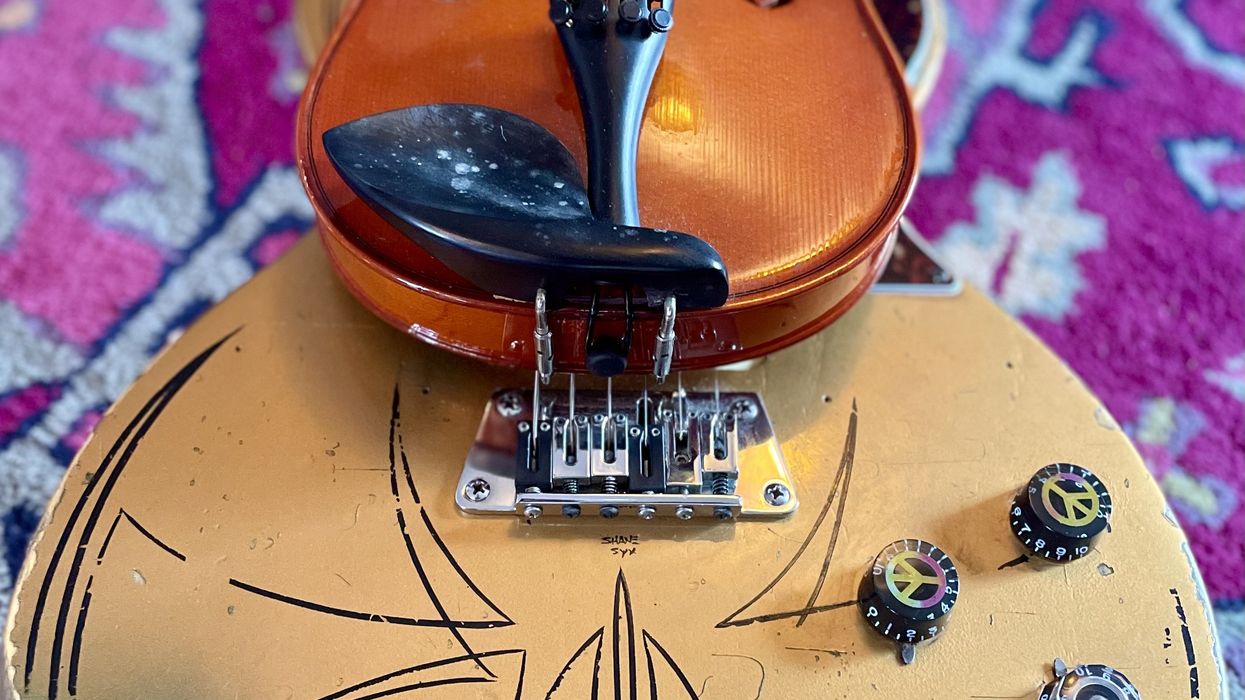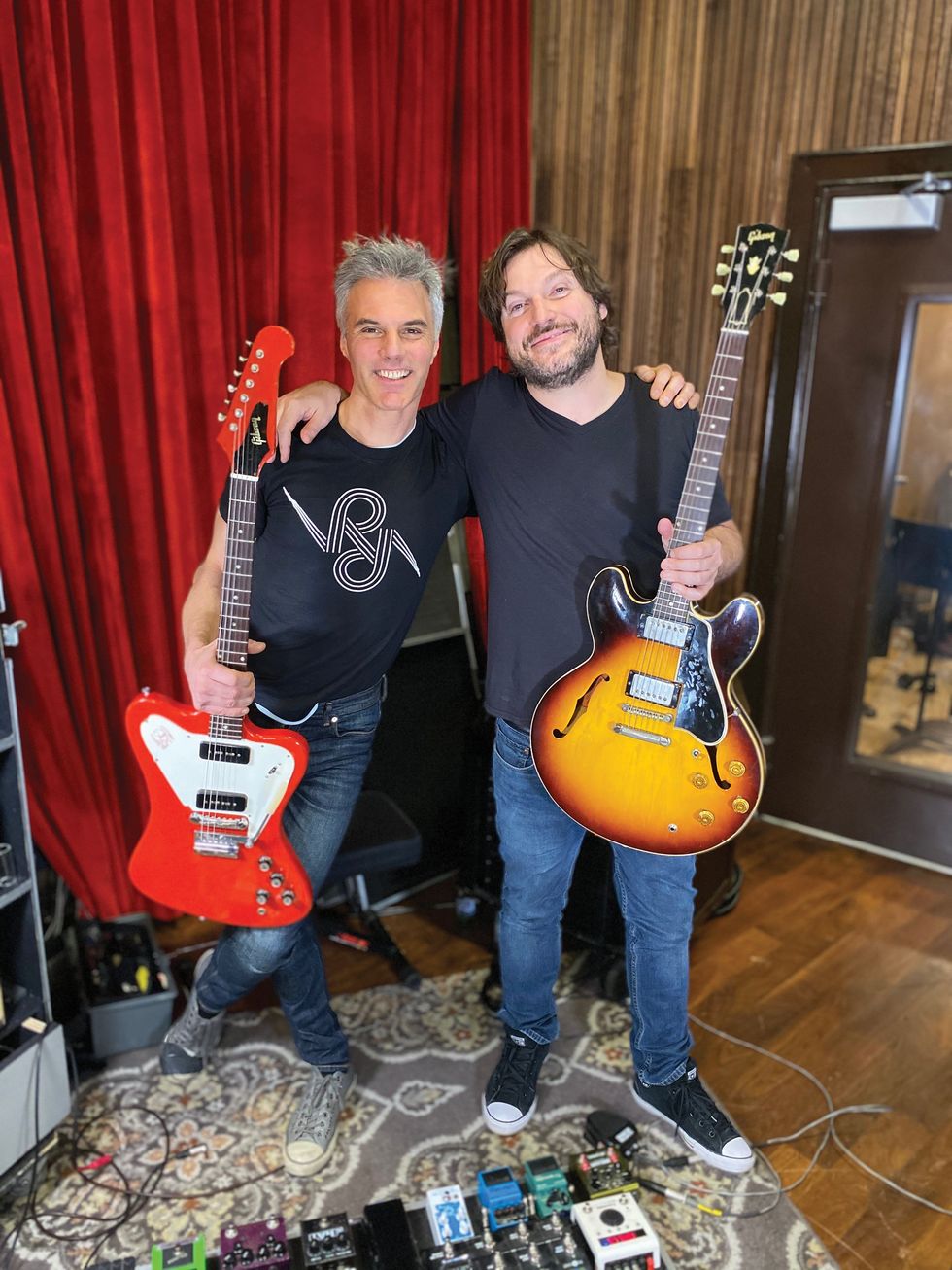Greetings fellow low-end fanatics! Last month, I explained how growing up with a keen ear in a culture known for great melodies helped me develop strong relative pitch [“Improve Your Groove,” October 2018], but that it also left me feeling like my internal clock needed help in a big way. I’d like to go through some more metronome exercises in this month’s column to build on the basic ones I included last month. They have all helped me in my quest for an internal clock that’s contagious enough to make everyone who listens bob their heads or tap their feet, even when playing unaccompanied by a drummer. Alas, I am still trying.
Going ol’ school. We left off by setting our metronomes to only play on beats 2 and 4. This simulates a handclap and adds a bit of fun to the exercise, but it also leaves you alone to establish beats 1 and 3—our job in most genres of popular music—without the help of a kick drum. The first exercise this month starts with setting the metronome to play on beats 1 and 3. It might seem like a less-challenging exercise since the metronome is effectively playing on the same beats you would in an old-school rock or country song. However, this can be quite tricky at slower tempos, since you want to get your finger (or pick) hitting the string exactly on the metronome’s click. A basic root-5 pattern is a great place to start for this exercise, but for something more advanced, check out Willie Weeks’ playing on Vince Gill’s “What the Cowgirls Do.” We should all aspire to play a root-5 on beats 1 and 3 and make it feel that amazing!
When practicing a more intricate figure on bass, like an eighth-note scale at a quicker tempo, a great way to feel the downbeat and halfway point (beat 3) of every measure is to emphasize the notes that occur on those beats by playing them slightly louder. You’ll find that your faster bass runs—the few times the music calls for them—will often sound much more solid when there’s a little emphasis on beats 1 and 3.
Deep-water diving. The next natural step after using the metronome to accent two beats of each measure is to use the metronome to play just one beat of each measure. This can get gnarly quickly. It may even make you question your talent level on a bad day. Fear not: It will elevate you and help you visualize the groove with your inner eye, internalize the time on a gut level, and lead you to imagine you are hearing the click sound on the beats of the measure where the click is not being played.
At slower tempos, this exercise requires a zen-like focus. Tip: Close your eyes so you aren’t getting help by seeing the pendulum of a metronome or seeing any kind of grid on your DAW. The point is to truly internalize the time and transform yourself into the groove monster you always wanted to be.
Part one of this exercise is setting the metronome to play on the downbeat of each measure. A slightly quick tempo is a safe place to start as long as you’re playing a fairly simple part. (You can slow it down as you get more confident.) Having a technical element interfere with your laser-like focus on simply keeping time might be counter-productive in the initial stages of this exercise. So, play a simple major or minor scale, and this should keep your mind on the groove.
Next, try the same exercise with the metronome set to play beat 2 of every measure. This changes things immediately and leaves you on your own to truly establish the groove. Up next is—you guessed it—setting the metronome to only beat 3 of each measure and repeating your exercises. And lastly, using the metronome set to only beat 4 is your graduation exam for this deep diving, challenging exercise.
If you keep your one-note-per-click going and simply start your exercise over with the click falling on a different beat, you oversee which beat of the measure the click plays on without touching the metronome. This is a helpful exercise and eventually leads to a better understanding of music styles where the bass plays primarily on beats other than 1 (like most Latin genres), and where drums aren’t playing a backbeat with snare hits on 2 and 4 to keep you in line. Your internal clock will be upgraded and it will affect all aspects of your playing.
Turn it all around. If you feel extraordinarily confident after all this, maybe it’s time for the ultimate internal clock test. Come up with a two-measure pattern and try playing it with the metronome only appearing once per measure, but this time on an upbeat. The next step is to only have the click on one of the 16th-notes that are not a downbeat—for example the “e” of 1. This exercise takes us far into extra-credit land, but it’s definitely worth a try.



















